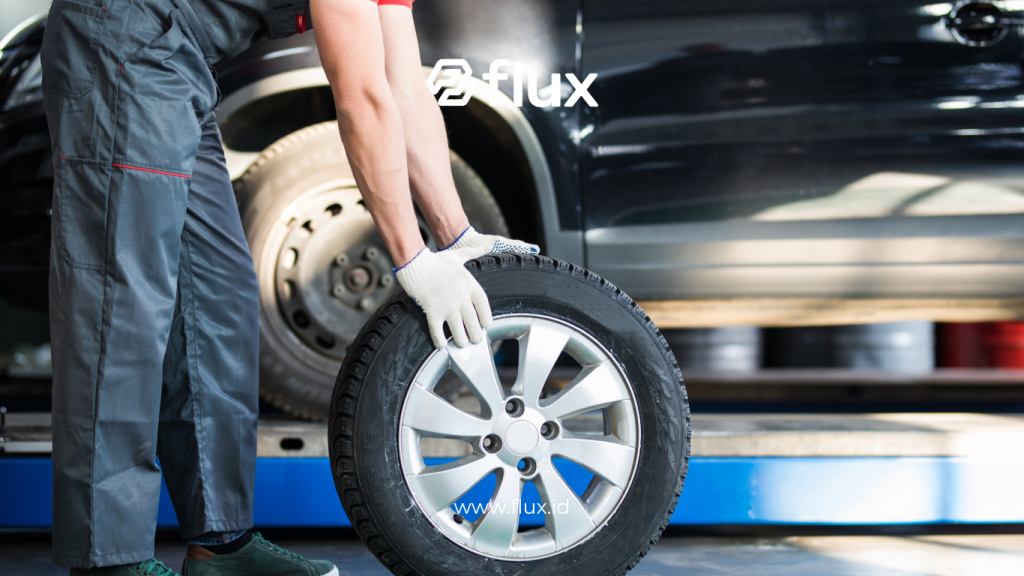Don't miss our holiday offer - 20% OFF!
Tire Pressure Monitoring Sensors (TPMS) have become essential in the automotive industry due to their critical role in ensuring driving safety. TPMS enables drivers to monitor tire pressure in real-time, significantly reducing the risk of accidents caused by incorrect tire pressure. In this article, we will explore how TPMS works, its benefits, and the various types of TPMS available today.
Contents
What is a Tire Pressure Monitoring Sensor (TPMS)?

A Tire Pressure Monitoring Sensor (TPMS) is a system designed to monitor the air pressure inside a vehicle’s tires. This system alerts drivers if the tire pressure falls below a predetermined level. TPMS has become a mandatory safety feature in modern vehicles, including both passenger cars and commercial vehicles.
Types of TPMS

TPMS systems generally fall into two categories: Direct TPMS and Indirect TPMS.
Direct TPMS
Direct TPMS uses sensors installed in each tire to measure pressure directly. These sensors typically mount on the valve stem and transmit tire pressure data wirelessly to the vehicle’s control unit. This system offers high accuracy and provides real-time pressure readings.
Indirect TPMS
In contrast, Indirect TPMS does not use sensors in each tire. Instead, it relies on wheel speed sensors within the ABS system to detect changes in tire pressure. When tire pressure decreases, the tire diameter shrinks, causing the wheel to rotate faster. The system detects these differences and alerts the driver if a tire pressure issue is present. Although Indirect TPMS is simpler and more cost-effective, it may lack the accuracy of Direct TPMS.
How TPMS Works

Read More: The Benefits of Proximity Sensors in Everyday Life: From Smartphones to Smart Vehicles
Direct TPMS
Direct TPMS sensors installed on the tires periodically measure both pressure and temperature. These sensors send the collected data to the central control unit via radio waves. If the system detects that tire pressure has dropped below a safe level, it activates a warning light on the dashboard. Additionally, these sensors can provide extra information, such as tire temperature and sensor battery status.
Indirect TPMS
Indirect TPMS monitors differences in wheel rotation speeds to detect tire pressure issues. As tire pressure decreases and the tire diameter becomes smaller, the wheel rotates more quickly. The system identifies these changes and notifies the driver if there is a problem with the tire pressure. Indirect TPMS usually requires recalibration after tire replacements or adjustments to tire pressure.
Benefits of TPMS

Read More: Vehicle Security: Optimal Control System
- Enhanced Driving Safety: TPMS helps prevent accidents caused by incorrect tire pressure. Low tire pressure can reduce traction, increasing the risk of skidding or accidents.
- Improved Fuel Efficiency: Properly inflated tires contribute to better fuel efficiency. Low tire pressure increases rolling resistance, which can lead to higher fuel consumption.
- Increased Driving Comfort: TPMS ensures tires remain in optimal condition, which enhances driving comfort. Proper tire pressure reduces tire wear and improves overall driving quality.
- Better Tire Maintenance: TPMS makes it easier to detect tire pressure issues and perform necessary maintenance. This helps extend tire life and reduces maintenance costs.
Maintaining TPMS
- Regularly Check Tire Pressure: Even though TPMS monitors tire pressure, manually checking it at least once a month remains essential.
- Calibrate the TPMS: After replacing tires or performing maintenance, ensure the TPMS system is correctly calibrated to function properly.
- Monitor Sensor Batteries: TPMS sensors contain batteries that can deplete over time. Regularly check and replace these batteries as needed.
- Address Warning Lights Promptly: Do not ignore the TPMS warning light. Check the tire pressure and resolve any issues immediately.
Conclusion
Tire Pressure Monitoring Sensors (TPMS) play a vital role in vehicle safety and efficiency. Understanding how TPMS operates and its benefits allows drivers to better maintain their tires and avoid safety issues. Both Direct TPMS and Indirect TPMS offer valuable functions in tire pressure monitoring, each with unique advantages and limitations. Proper maintenance of TPMS ensures that the system operates effectively, enhancing both driving safety and comfort.





